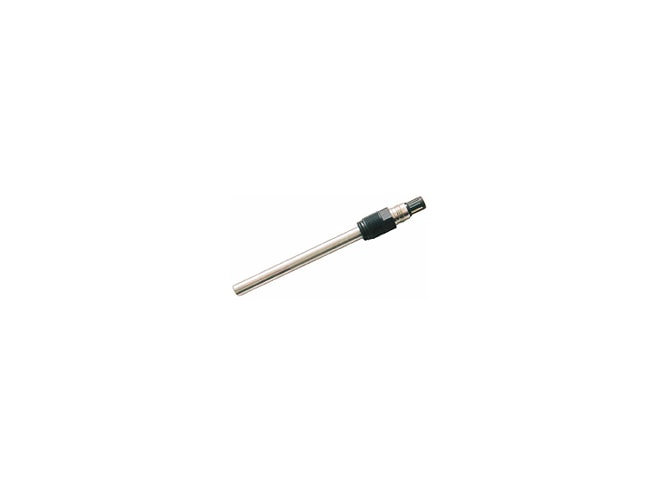
Rosemount Analytical Bx438 Dissolved Oxygen Sensor
Designed to monitor trace levels of dissolved oxygen in carbonated beverages, longer sensor life.

Overview
Features
- Designed for carbonated beverages
- Longer sensor life
- Less maintenance required
- 175 psig (12 bar) max pressure
- Less than 60 Sec response time
- 120 mm or 225 mm sensor length
- Temperature: 14 to 212°F (-10 to100°C)
- Sensor output in air: 180 to 400 nA
- Minimal flow sensitivity
- Minimal CO2 offsets
Description
The Rosemount Analytical Bx438 Dissolved Oxygen Sensor is designed to monitor trace levels of dissolved oxygen in beer and other carbonated beverages. The Bx438 sensor utilizes a robust membrane, which increases the life of the membrane. The sensor is designed to withstand significantly more clean in place (CIP) cycles than other dissolved oxygen sensors.
Most dissolved oxygen sensors operate by reduction of oxygen at the surface of the cathode. If the cathode is in direct contact with the solution, then interference effects from other substances may lead to inaccurate readings. The Model Bx438 cathode is covered with a gas permeable membrane. The oxygen diffusing through the membrane is completely reduced at the cathode, and the current between anode and cathode is proportional to the oxygen content in the sample.
The design for the membrane is the key to achieving high performance. The Model Bx438 uses a proprietary membrane material. This thick, steel-meshedreinforced, double layer membrane enables the sensor to withstand high pressures and temperatures while maintaining high diffusion rates, resulting in stable outputs and fast response times.
Due to the unique design of the sensor, maintenance is rarely required. The special double membrane design is less sensitive to contamination from protein and other fouling agents. The electrode construction guarantees excellent stability even after numerous sterilization cycles. Competitive dissolved oxygen sensors require maintenance after as few as 3-5 cycles. The model Bx438 sensor lasts through as many as 30-50 cycles.
Model Bx438 membrane material and overall design ensure that the flow rate has minimal effect on the sensor's measurements. The unique design also experiences minimal drift in low flow environments.
Many competitive amperometric dissolved oxygen sensors set the polarization voltage to -670 mV. This set point may lead to offset readings due to carbon dioxide effects at low oxygen concentrations. The Model Bx438 sensor uses a zero polarization voltage setpoint, which results in the most accurate dissolved oxygen readings.
Many competitive amperometric dissolved oxygen sensors require frequent maintenance, such as membrane replacement, cathode replacement, and electrolyte replenishment. The Model Bx438 sensor's robust design minimizes the maintenance needed for a stable dissolved oxygen measurement. The cost to maintain the Model Bx438 sensor will be approximately one-third the cost required to maintain competitive dissolved oxygen sensors.
Documents
Accessories
Applications
This product can be used in the following applications:
Need Help? Call a Flow engineer at 1-800-884-4967
We're open 8:00 am to 5:30 pm ET






